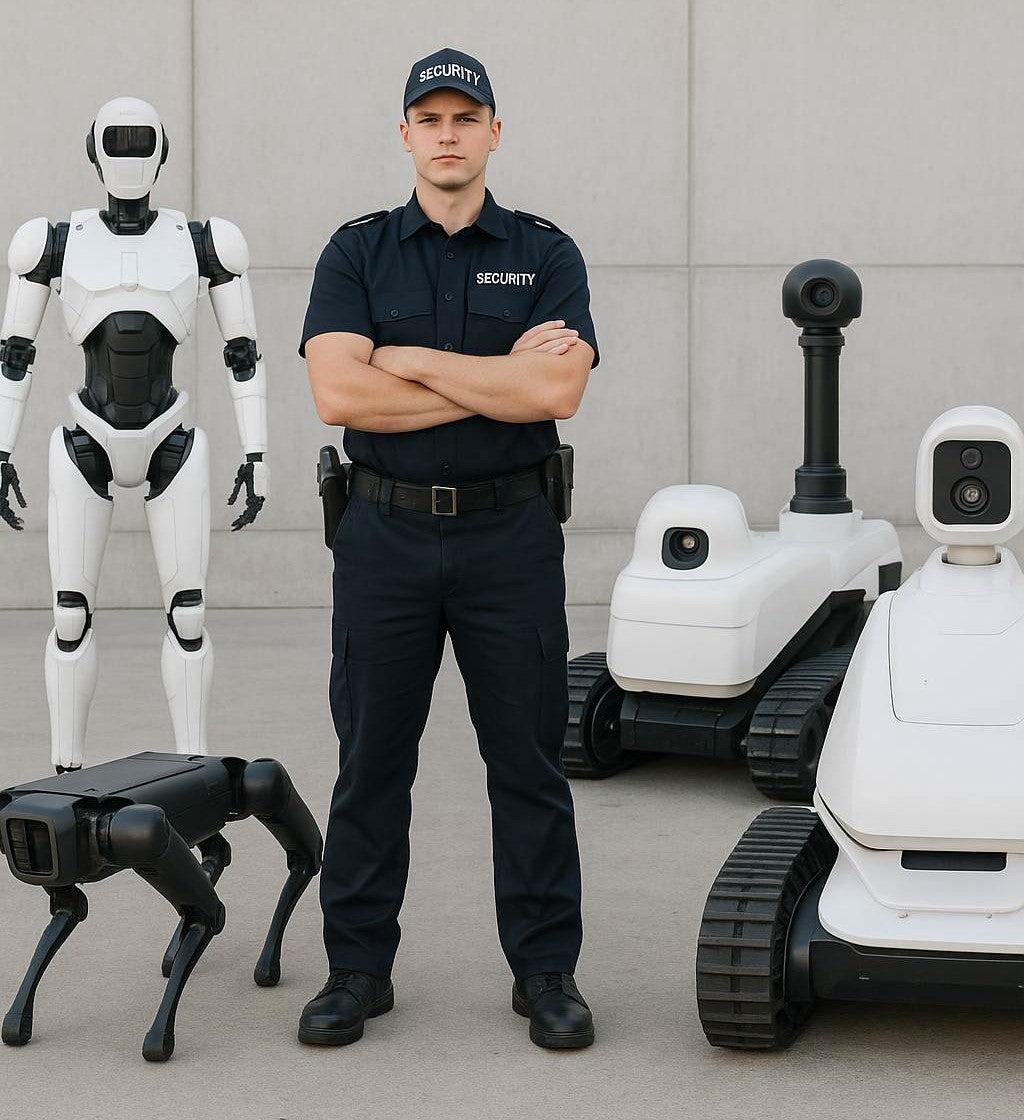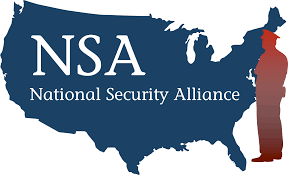
Discover how collaboration between security guards and robot patrols delivers 24/7 monitoring, faster threat detection, and future-ready protection.
Are Robots and Assisted Security Patrols the Future of Guarding?
Randi Sherman
4 Minute Read
Security patrol robots have long been utilized in industrial settings, such as factory floors, where they assist in surveilling large areas. Robots can patrol 24/7. They don’t get tired, don’t take days off, and are safer to deploy in scenarios when conditions are treacherous or too dangerous for humans.
Widely adopted for border patrol and by the military, robots help to enhance surveillance, improve operational efficiency, reduce costs, and enable faster decision-making in high-risk situations.
When you consider the cost reduction and enhanced features, it’s easy to understand why businesses and facilities are exploring robotic patrol solutions.
But will robots replace a physical guard presence? It’s unlikely at present. Although the technology is becoming more sophisticated and accurate, robots are most often integrated using a hybrid approach. Equipped with cameras and sensors and paired with AI analytics, robotic patrol units provide security personnel with real-time intel, helping guards do their jobs more efficiently.
Today, let’s dive into robotic security patrols and discuss the benefits, challenges, and how security guards interact with them in 2025.
The Benefits of Robotic Security Patrols
One of the most attractive benefits of robotic security patrols is their ability to operate 24/7. They don’t get tired and can operate continuously, providing unparalleled response capability that human guards simply cannot match.
Equipped with onboard technology for data collection and reporting, robots eliminate the variability and potential oversights inherent in human monitoring. Advanced sensors help detect intrusions and monitor for hazardous conditions, such as gas leaks or fires, responding to environmental changes in real-time.
Over time, robotic patrols also enable substantial cost savings compared to the expense of recruiting, hiring, and managing additional human staff. Many firms report superior returns on investment, with some estimating savings of 30-60% compared to manned guards (source).
Regulations and Compliance Concerns for Robotic Security
Robotic security, like any AI-powered surveillance tool, has significant compliance issues that demand careful consideration.
Compliance with local and international data privacy frameworks is essential, and this can be a complex matter when deploying robots in public places. Video or audio recordings must comply with these frameworks, raising questions about how held data is used and stored.
Public safety and liability are additional concerns, as firms may be held liable if the robot is involved in an injury or is not adequately supervised. For instance, a robotic patrol can potentially impact accessibility in public places, which may conflict with ADA compliance mandates.
How Security Guards Interact with Robots: Working as a Team
Security guards work best with robots when working as a team. Robots excel at tasks such as patrolling large areas, detecting unusual events and threats, performing repetitive tasks accurately, and transmitting real-time data to the command center. They can also operate in environments that would be hazardous for humans, such as chemical or gas leaks, or in cases where the terrain would make it challenging for humans to navigate safely.
Humans have a vastly different skill set that robots can’t match, such as the ability to assess a situation, empathize with others, and de-escalate conflicts. Human guards can also develop relationships with the public and clients, making informed decisions based on what is best for all stakeholders.
All of these attributes are essential to providing efficient lawful security. Working together, robots and humans make a great team.
Security personnel control and monitor robotic patrols remotely. Robots send information to the command center, and guards can respond using various methods. They can zoom in for a closer look, communicate directly with an individual through the robot’s onboard systems, and activate deterrents such as alarms, sirens, or flashing lights.
Real-time alerts from the robot can notify guards of critical situations that require human intervention, enabling them to determine the best response in complex or evolving situations.
Guard training to enhance robotic collaboration
To work effectively with robotic patrols, guards must learn how to interact safely with their systems. Training should include plenty of hands-on training, drills, and practice, and should cover the following:
· ISO 10218-1 and ISO 10218-2 are standards that focus on systems and safety requirements as they apply to safety and robot integration.
· Recognizing potential risks associated with robots.
· Proper operation of robotic controls and functions.
· Emergency procedures in case of a robot malfunction.
· Integration with existing security systems.
Examples of robot-guard collaboration in action
Robots are often used to patrol college campuses, hospitals, malls, warehouses, and apartment complexes that would otherwise require several guards to cover adequately. When robots detect threats or anomalies, they immediately alert the command center or a human guard, freeing up human guards to focus on tasks requiring empathy, sympathy, and sensitivity.
Robots are now frequently used on construction sites, where their primary objective is to patrol potentially hazardous environments. Robots are capable of detecting dangerous gases, such as carbon monoxide, ensuring the jobsite is safe for humans.
High-security areas, such as data centers, strictly limit human access and are excellent use-cases for patrol robots. The robot can monitor access zones, identify unauthorized individuals, and detect environmental anomalies, such as temperature fluctuations, that could put equipment at risk. Once a threat is detected, the guard can deploy the appropriate response to mitigate the situation.
Robots are especially useful in high-risk scenarios, such as standoffs, or when locating a perpetrator requires minimal risk to human life.
In one particular incident, a robotic patrol “dog” was instrumental in resolving a situation where a man was shooting at SWAT officers. The robot was instrumental in gathering intel for law enforcement, providing situational awareness of the suspect’s location and disposition. Officers reported that the robot eliminated the need to insert humans into the situation at early stages of the standoff and may have prevented an officer from being shot (source).
Challenges and Limitations of Robotic Patrol Units
Although robot patrols can be extremely helpful for guards, they are mechanical devices and are subject to technical reliability and maintenance issues.
Public acceptance and perception may also be a concern, as some people inherently distrust machines, especially when they are powered by AI.
Considering the challenges many firms have with recruiting, robotic support may be the sustainable solution they need. However, the upfront costs for deployment and integration can be exceptionally high, so it is essential to weigh the cost benefit. Cost reduction over time, risk mitigation, and fewer security incidents may well justify the expense.
The Bottom Line
So, are robotic patrols an enhancement or a replacement for security guards? While robots can support security guards and make their jobs safer and more efficient, they cannot replace the personal touch that guards provide.
We are witnessing an evolution in security, where robot-assisted environments are becoming more common. To that end, guards who are adequately trained in interacting with patrol robots will be in high demand, and it may well become an essential skill set.
Explore our continuing education guard training courses today.






